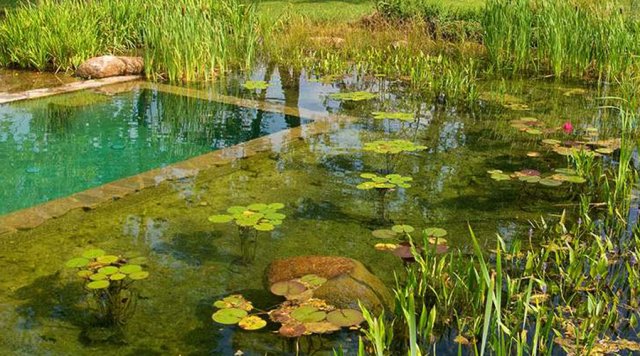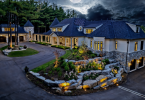
Photo Source: ecohome.net
If the title of this post has you scratching your head, keep reading for our learners-guide: all about natural swimming pools.
What is a natural swimming pool?
As its name suggests, a natural swimming pool is a pool filtered sans chemicals (such as chlorine, salt, or ozone), instead using biological features to keep the water clean and clear.
What are the benefits of natural swimming pools?
As opposed to its chlorinated counterpart, natural swimming pools will not leave you susceptible to the dangers and discomforts of chemical additives, (aka red eyes and dry, itchy skin). Natural swimming pools are known for their water quality, and natural maintenance methods, which can drastically cut down on running and maintenance costs in general. To boot, natural swimming pools provide integral habitat for wildlife and plant life, making them the (obvious) eco-friendly contender.
How does a natural swimming pool operate?
Unlike a conventional, chlorinated pool, a natural swimming pool requires a decent portion of it to be dedicated to the natural filtration process: sometimes up to 50%. Water pumps are used to transfer water to shallower parts of the pool, which are chock-full of plant life, in order to maximize the filtration. There should also be a good amount of shade on the pool, which can potentially be provided by plant life, in order to limit algae growth.
What kind of plants does a natural swimming pool need?
There are three types of plants necessary to keep your natural swimming pool in optimal working order: floating plants (which provide shade to microorganism, such as algae, and prevent unnecessary growth or built up), oxygenated plants, (which absorb phosphates and nitrates, also preventing unnecessary algae-growth), and biological filters, (the roots of these types of plants having a sift-like purpose, removing extraneous contaminates from the water on an ongoing basis).
What type of maintenance does a natural swimming pool need?
As aforementioned, the pool part of a natural swimming pool requires much less regular maintenance. Rather, the focus should be on maintaining the plant life, particularly come fall, when you will need to dismantle the pumps, and prune the plant life, and cover the surface of the water.
Latest posts by Canadian Home Trends (see all)
- Dining Room Design Tips - July 2, 2025
- Practical Luxury in Forest Grove - July 2, 2025
- The Hidden Value of Great Design - July 2, 2025






